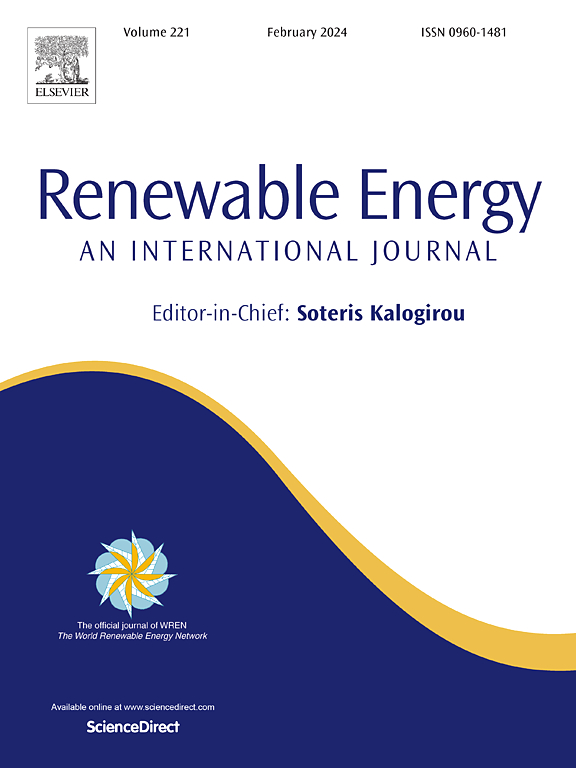山地光伏布局优化涉及水电光伏混合系统和选址
IF 9.1
1区 工程技术
Q1 ENERGY & FUELS
引用次数: 0
摘要
与水光混合系统相结合的山地光伏技术在未来的电力市场中扮演着重要的角色。本文提出了一个改进的山地光伏组件布局模型,通过该模型确定了最优的光伏建设地点,并对输出性能进行了评估。以中国两河口水电站为例进行了研究。采用地理信息系统-层次分析法(GIS-AHP)技术初步确定了研究区内6个候选PV站点(Site I ~ VI)。根据适宜性评分分布和栅格图像处理进行6次独立选择,最终选择出6个具体的光伏布局区域。6个选定区域的累计面积约为6个候选区域的24.6%。最佳候选站点(site II)的单位面积年发电量、平准化能源成本(LCOE)和投资回收期(PBP)分别为221.1 kWh/m2、0.024 USD/kWh和9.28年。与传统的大型光伏组件布局相比,该模型提出的布局可使发电量提高7.7%,LCOE降低14%,PBP缩短18.4%。本研究为水电光伏混合系统的山地光伏可行性提供了直接依据,为复杂山地环境下光伏组件布局方法的研究奠定了基础。本文章由计算机程序翻译,如有差异,请以英文原文为准。
Layout optimization of mountain PV involving hydro-PV hybrid system and site selection
Mountain PV technology associated with hydro-PV hybrid systems plays an important role in the future electricity market. This study presented a modified model for the mountain PV module layout, whereby optimal PV construction sites are determined and output performance are evaluated. A case study in Lianghekou Hydropower Station in China was conducted. The Geographic Information System-Analytic Hierarchy Process (GIS-AHP) technique was employed to preliminarily identify six candidate PV sites (Site I ∼ VI) in the study area. Six independent selections were executed based on suitability score distribution and raster image processing, then six specific regions for PV layout were selected. Accumulative area of the six selected regions was approximately 24.6 % of the six-candidate area. The annual power generation per unit area, the Levelized Cost of Energy (LCOE) and Payback Period (PBP) of optimal candidate site (Site II) were respectively 221.1 kWh/m2, 0.024 USD/kWh and 9.28 year. Compared with conventional layout of large-scale PV modules, proposed layout from the model could achieve 7.7 % increase in power generation, 14 % reduction in LCOE and 18.4 % shortening in PBP. This study provided direct evidence for mountain PV feasibility in hydro-PV hybrid system, and paved the way on PV module layout method in complex mountain environment.
求助全文
通过发布文献求助,成功后即可免费获取论文全文。
去求助
来源期刊

Renewable Energy
工程技术-能源与燃料
CiteScore
18.40
自引率
9.20%
发文量
1955
审稿时长
6.6 months
期刊介绍:
Renewable Energy journal is dedicated to advancing knowledge and disseminating insights on various topics and technologies within renewable energy systems and components. Our mission is to support researchers, engineers, economists, manufacturers, NGOs, associations, and societies in staying updated on new developments in their respective fields and applying alternative energy solutions to current practices.
As an international, multidisciplinary journal in renewable energy engineering and research, we strive to be a premier peer-reviewed platform and a trusted source of original research and reviews in the field of renewable energy. Join us in our endeavor to drive innovation and progress in sustainable energy solutions.
 求助内容:
求助内容: 应助结果提醒方式:
应助结果提醒方式:


